

— Products —
 Consumer hotline +8618073152920
Consumer hotline +8618073152920 WhatsApp:+8615367865107
Address:Room 102, District D, Houhu Industrial Park, Yuelu District, Changsha City, Hunan Province, China
All products
Electrical conductivity sensor for soil, also known as a soil conductivity meter or soil EC sensor, is a device used to measure the electrical conductivity of the soil. These sensors are crucial for agriculture, environmental monitoring, and research purposes, as they provide valuable information about soil conditions that can impact plant growth and ecosystem health.The sensor typically consists of two or more electrodes that are inserted into the soil. When an electrical cu···
Tel/WhatsApp:+8615367865107
Email:Arvin@niubol.com +Nearly 100 partner company in more than 68 countries. We are committed to providing high-quality, practical products to meet your needs and help you solve problems.Product Details
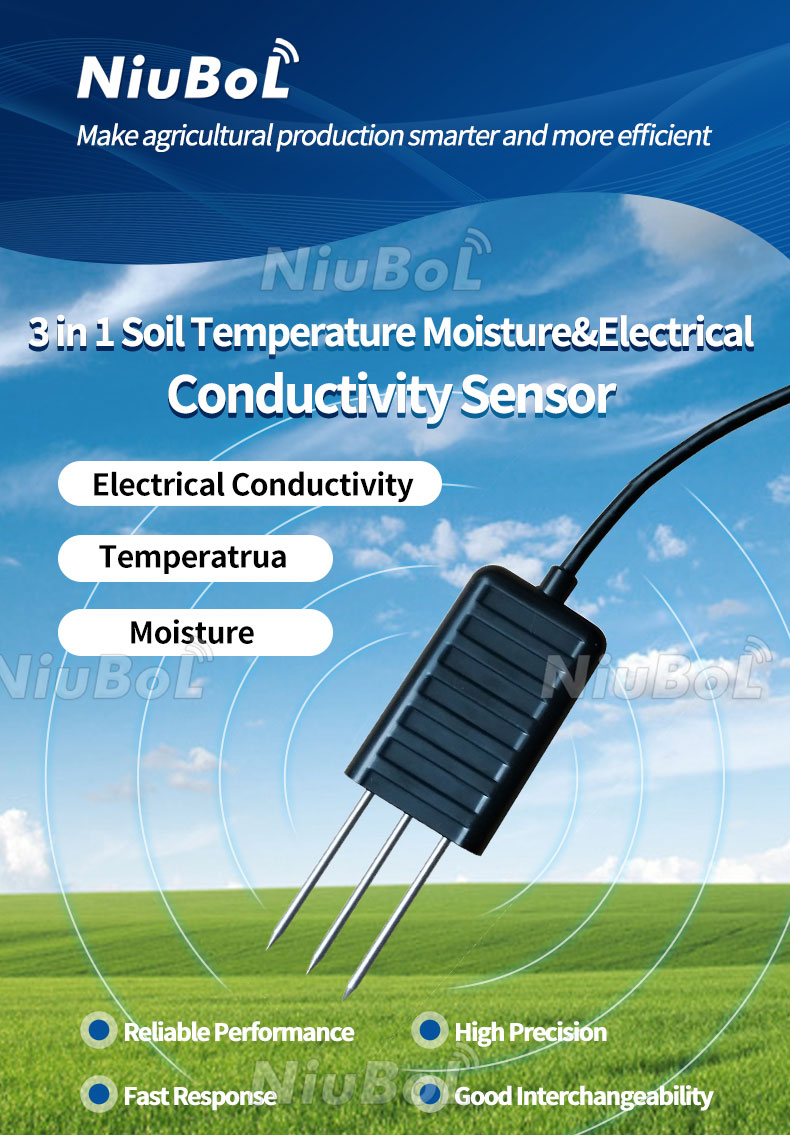
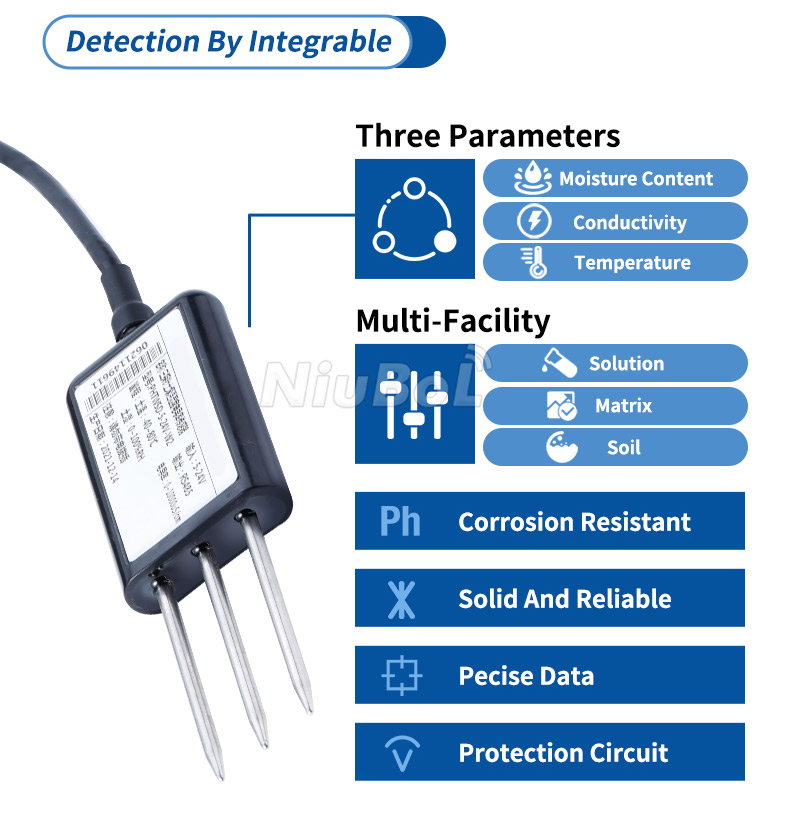
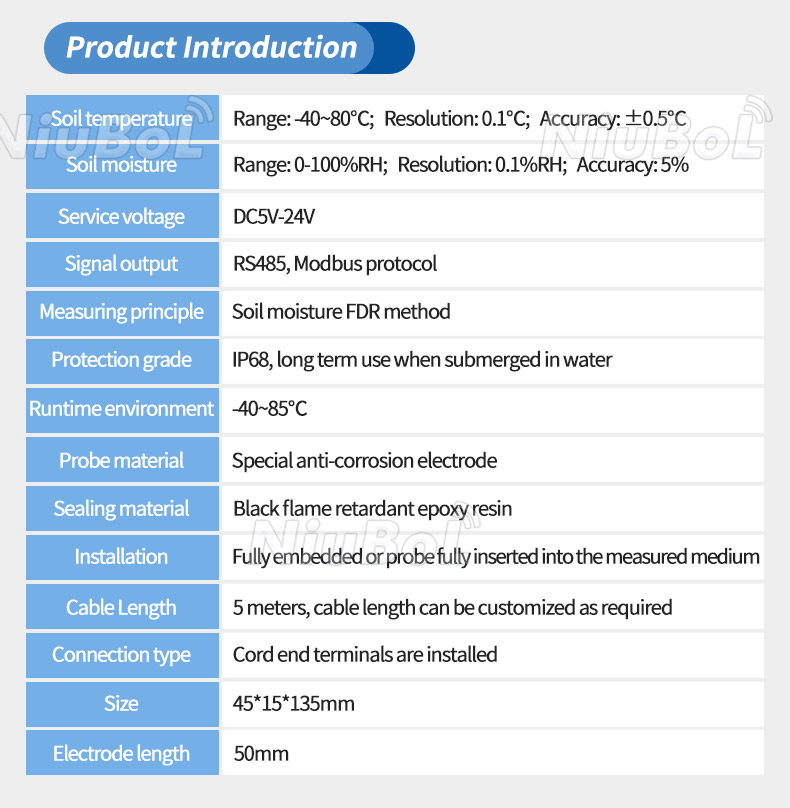
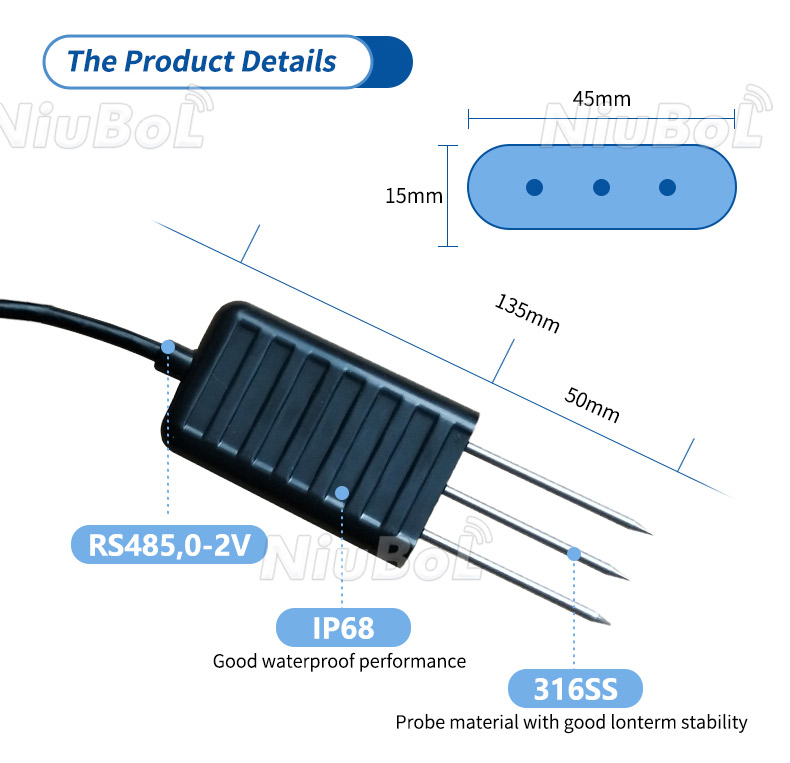
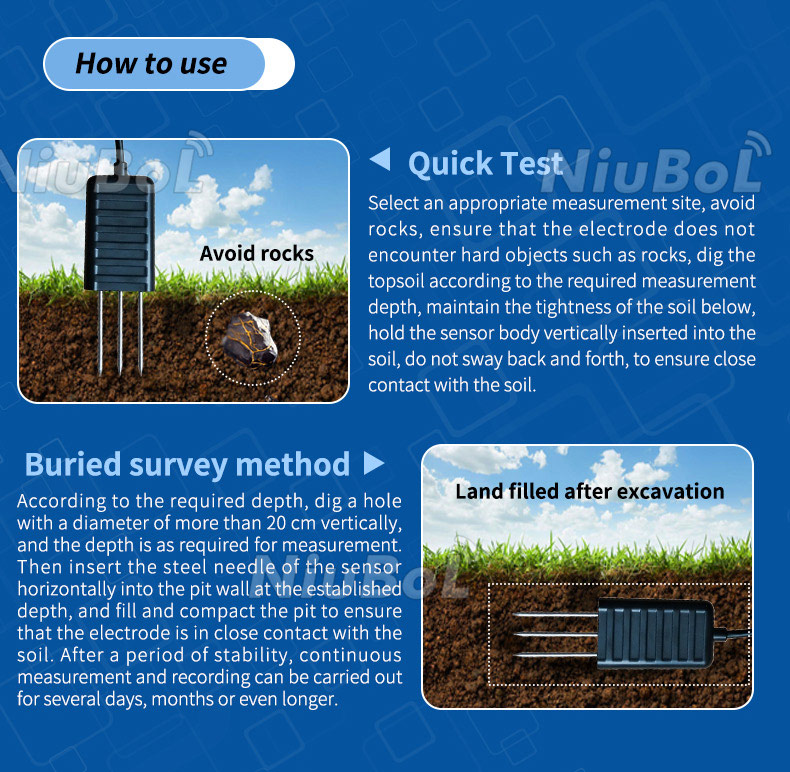
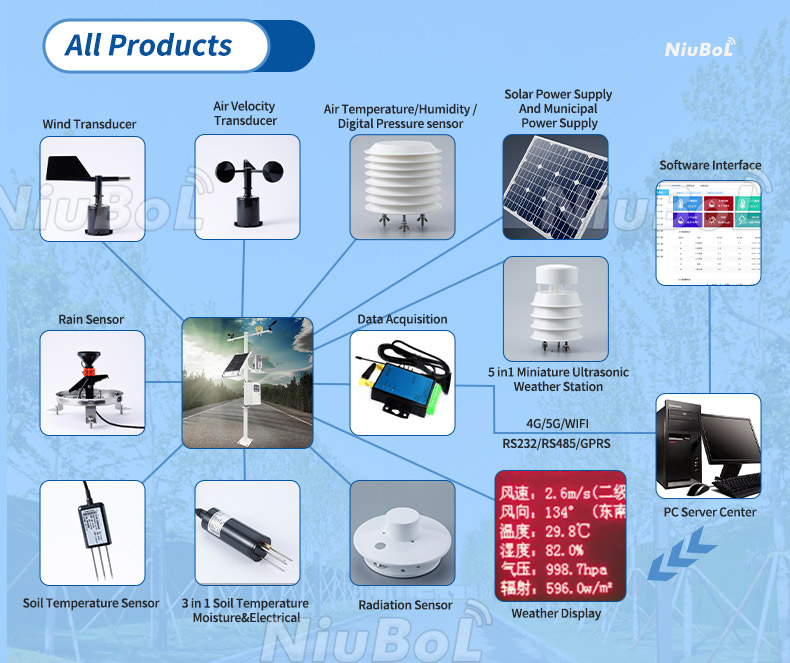
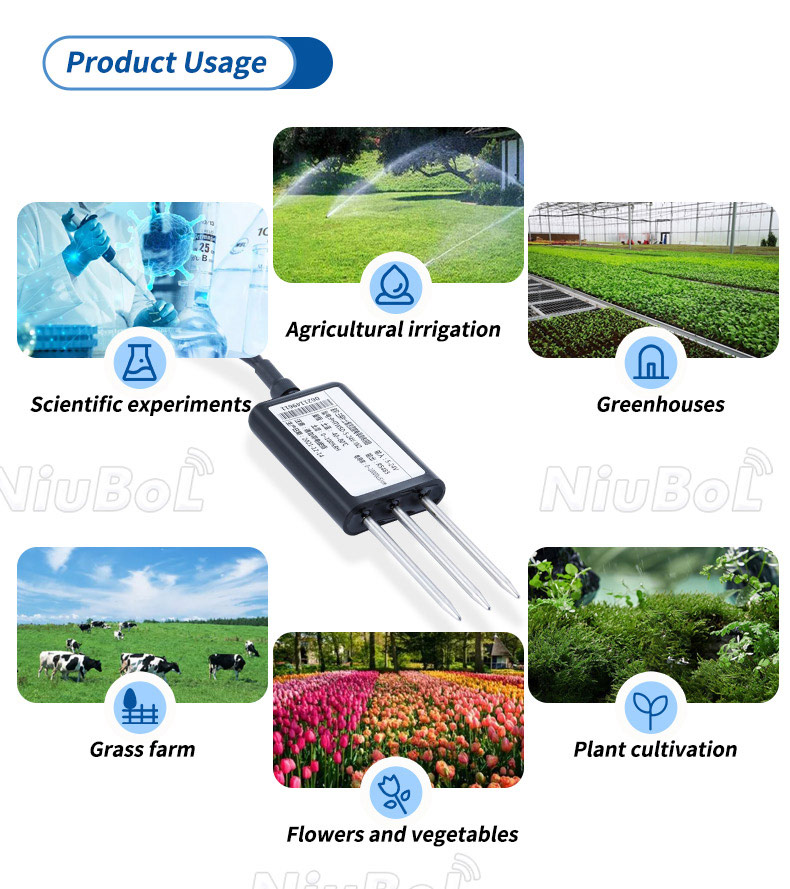
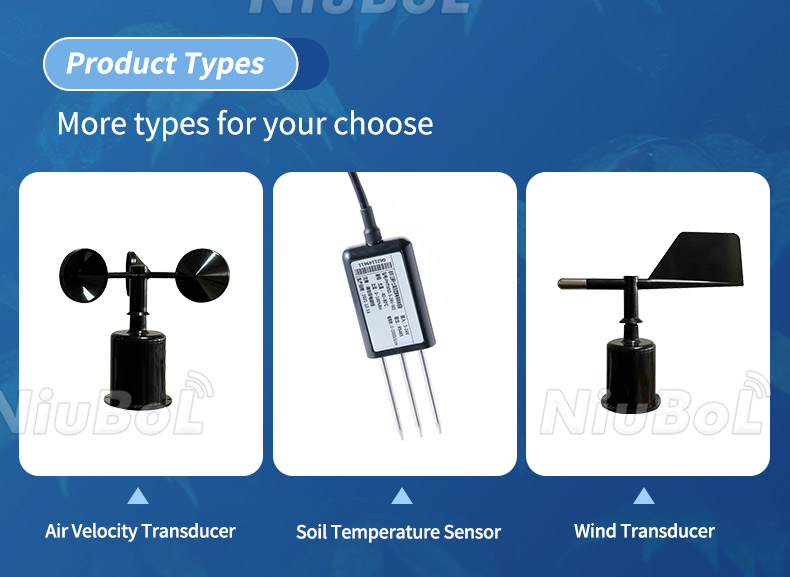
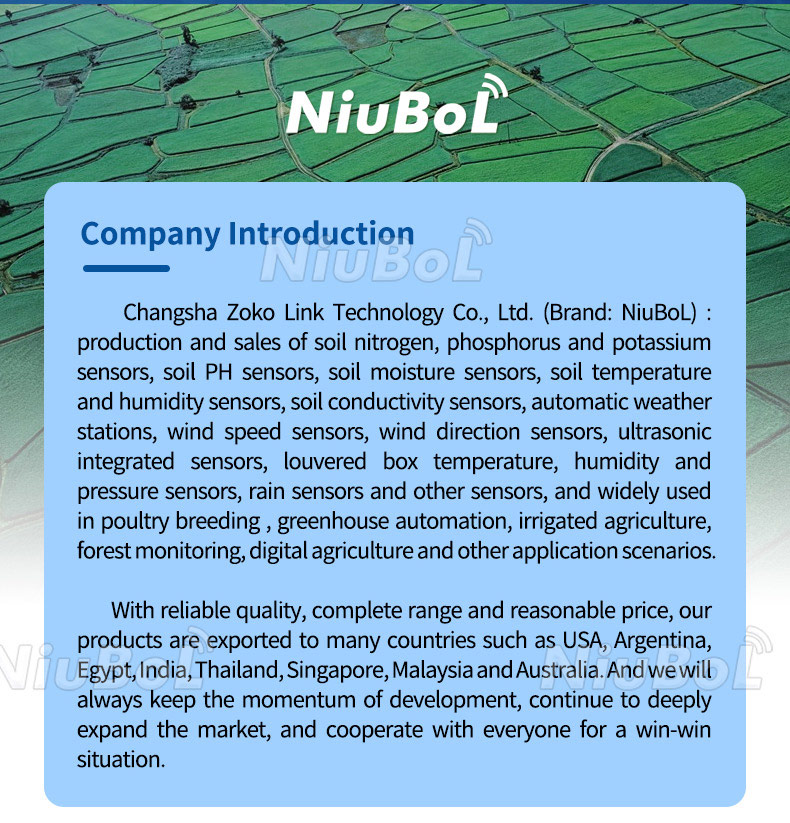


An electrical conductivity sensor for soil, also known as a soil conductivity meter or soil EC sensor, is a device used to measure the electrical conductivity of the soil. These sensors are crucial for agriculture, environmental monitoring, and research purposes, as they provide valuable information about soil conditions that can impact plant growth and ecosystem health.
The sensor typically consists of two or more electrodes that are inserted into the soil. When an electrical current is applied between the electrodes, the conductivity of the soil affects the flow of the current. The sensor measures either the resistance or the conductance of the soil, which can then be related to the soil's electrical conductivity.
There are different types of electrical conductivity sensors for soil, including:
1. Contact Probe: This type of sensor has two metal electrodes that are directly in contact with the soil. It measures the conductivity at a specific point in the soil, providing localized readings.
2. Tensiometer-Type Sensor: In this design, the sensor incorporates porous ceramic tips that allow for water movement between the soil and the electrodes. By measuring the electrical conductivity of the water-soil interface, it provides an indication of the soil conductivity.
3. Capacitance Sensor: Capacitance-based sensors use the principle that the dielectric constant of the soil, which is related to its electrical conductivity, affects the capacitance of the sensor. By measuring changes in capacitance, the sensor determines the soil conductivity.
Soil electrical conductivity sensors find applications in agriculture, environmental monitoring, and research. They help farmers and researchers assess soil salinity levels, monitor irrigation practices, and make informed decisions regarding fertilization and soil management.
1.Principle of Operation: The sensor operates on the principle that soil contains various ions, such as sodium (Na+), potassium (K+), calcium (Ca2+), and magnesium (Mg2+), which can conduct electricity.The conductivity of the soil is influenced by the concentration of these ions, which in turn is affected by factors such as soil moisture, organic matter content, pH level, and the presence of pollutants or nutrients.
2.Sensor Components: The sensor usually consists of a conductive probe or electrode that is inserted into the soil.The probe is often made of materials like stainless steel, copper, or carbon, which are capable of withstanding the environmental conditions in the soil.
3.Measurement Technique: The sensor measures the electrical conductivity by applying a known voltage across the probe and measuring the resulting current.The conductivity is then calculated using the Ohm's Law (V = IR), where V is the voltage, I is the current, and R is the resistance of the soil.
4.Data Collection: The sensor may be connected to a data logging system or a mobile device via wires or wirelessly.This allows for the continuous monitoring of soil conductivity over time, which can be valuable for tracking changes in soil conditions.
5.Calibration: To ensure accurate measurements, the sensor needs to be calibrated.This is typically done by comparing the sensor's readings to those from a calibration standard with a known conductivity.The sensor is adjusted until the readings match the known standard.
6.Applications: These sensors can be used in a variety of applications, including precision agriculture, where they help farmers optimize irrigation and fertilization, environmental monitoring, where they detect changes in soil health, and research, where they provide data for studies on ecosystem dynamics.
It's important to note that the interpretation of electrical conductivity measurements can be complex and may require specialized knowledge.Additionally, the type of sensor and the method of measurement can influence the accuracy and reliability of the data collected.
Soil conductivity sensor is a kind of instrument used to measure the conductivity in the soil, its role and value are mainly reflected in the following aspects:
Assessing soil quality: Soil conductivity can reflect parameters such as salinity, ion concentration and water content in the soil, which in turn assesses the fertility and quality of the soil. This is important for agricultural production and land management as these parameters can influence plant growth and soil fertility.
Guiding agricultural production: By measuring soil conductivity, the moisture status and salt content of the soil can be learnt, thus guiding agricultural production. For example, farmers can rationally adjust the irrigation method, irrigation amount and irrigation time according to the changing law of soil conductivity to improve the yield and quality of crops.
Monitoring the degree of soil salinity: High conductivity usually means high soil salinity content, while low conductivity indicates low soil salinity content. Based on the measurement of soil conductivity, farmers can choose suitable crops to plant or take corresponding measures to improve the soil to increase the adaptability and growth efficiency of crops.
Environmental monitoring and management: Changes in soil conductivity can reflect pollutants in the soil. Certain pollutants will affect the conductivity of the soil, through the measurement of changes in soil conductivity, soil pollution can be detected and assessed in a timely manner, providing a scientific basis for environmental protection and governance.
Promote the development of smart agriculture: with the development of smart agriculture, the soil conductivity sensor can better monitor the conductivity in the soil. Sensors as monitoring sensing equipment, is the "eyes" and "ears" of the smart greenhouse, directly determines the accuracy of the monitoring data. In smart agriculture, the sensor can monitor the soil parameters in real time, provide a scientific basis for agricultural decision-making, reduce the intensity and difficulty of manual labour, and effectively feel the convenience of science and technology.
In summary, soil conductivity sensors in agriculture, environmental monitoring, land management and other fields have a wide range of application prospects and value.
Sensors & Weather Stations Catalog
Agriculture Sensors and Weather Stations Catalog-NiuBoL.pdf
Weather Stations Catalog-NiuBoL.pdf
Related recommendations
 Multi-Depth Soil Sensor RS485
Multi-Depth Soil Sensor RS485 TDR Soil Moisture Sensor
TDR Soil Moisture Sensor Pyranometer Solar Radiation Sensors
Pyranometer Solar Radiation Sensors Soil ph sensor
Soil ph sensor Tipping Bucket Rain Gauge
Tipping Bucket Rain Gauge Air Temperature and Humidity Sensor
Air Temperature and Humidity Sensor
Screenshot, WhatsApp to identify the QR code
WhatsApp number:+8615367865107
(Click on WhatsApp to copy and add friends)
